Introduction
Here is MA902 Assignment Sample.
Recently animal disease creates a great threat to modern civilization and human beings. Globalization and sufficient data resources can support the prediction of animal diseases with the help of a machine learning approach. The major focus on machine learning is to make computers for learning from data and using the learned experience to predict animal disease. This essay can introduce the animal epidemic situation using machine learning. Machine learning is perfectly applied for the analysis of large amounts of biological data. It is most important to develop novel and proper approaches to detect prediction based on animal health. It is now the main objective to risk management plans. Improper use of medicines including antibiotics can become a serious threat to antimicrobial resistance for animals. Actually, antimicrobial resistance is a dangerous threat to the health, agriculture, and economics of both animals and humans. AMR is linked to the increment of animal fatality as well as morbidity rates that can lower the productivity of animal farms.
Description
Diseases of animals remain a concerned principal in the world as the economic losses continuously may create a large problematic situation for humans. As per the view of Morebet al. (2020), there is a bunch of medicines called veterinary medicine that can be the prevention and treatment of diseases for not only the domesticated animals but also the wild animals and the animals used for scientific research purposes. The agricultural essentialities are the control of diseases of economically significant animals. The eradication of animal diseases instead of their control is the most important task since world war two. Lots of information that is concerned about the animal diseases are applied to the domesticated animals such as cattle, sheep, and pigs, and these animals are economically unimportant for food sources in India. On the other hand, the animals such as the goat, the elephant, water buffalo, the yak, and the camel all are domesticated animals that are economically valuable for so many developing countries. In these developing countries, the prevention of animal diseases is usually controlled by the eradication of diseases.
Besides the improvement of several effective methods of disease control, huge quantities of meat and milk are ruined every year throughout the world. As per the view of Mekonnenet al.(2019), the countries where animal disease control has not been yet implemented, the loss of animal protein from disease can be approximately 20 to 30 percent of the quantity available in the areas. Additionally, these countries suffer from great losses from poor husbandry practices. The study of animals with diseases is similar to the effect on man by diseases. Diseases in animal populations can be characterized by so many features. Some diseases named sporadic diseases appear only specifically in an animal population. Diseases present in a particular place are normally referred to as endemic and diseases that occasionally created a huge number of animal populations are considered an epidemic. These diseases most commonly represent an unstable relationship between affected animals and the causative agent.
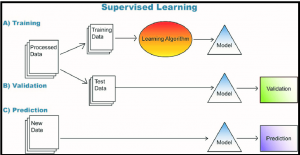
Figure 1: Supervised machine learning algorithm for prediction
(Source: Pallathadkaet al. 2021)
Data mining can help to overcome the problem to predict diseases. Disease data can be helpful to find hidden patterns in data mining a large amount of medical data. For disease prediction techniques k nearest neighbor and controversial machine learning algorithm are used for perfect prediction of diseases. For the disease prediction scenario, the disease symptoms dataset is required. After predicting the disease of animals this system provides the risk associated with the general disease. As per the view of Pallathadkaet al. (2021), there are so many types of animal diseases such as foot and mouth disease, rabies, tetanus, ringworm, and so on. However, machine learning is a wonderful approach for the prediction and diagnosis of diseases. Some machine learning algorithms including decision trees and naive Bayes are employed on the dataset and predict the animal diseases. This research is demonstrated by the good accuracy of the algorithm.
In this essay writing a global animal disease information system such as zoonosis and other highly impactful animal diseases is discussed thoroughly. Avian influenza is forecasted by taking into a little bit exogenous meteorological variables including humidity, temperature, and precipitation. Machine learning can offer a prolific approach for developing automatic, sophisticated algorithms of large dimensional data. The proposed machine learning approaches can enable the prediction of heart diseases in animals very quickly. The data mining process tool has the best assistance regarding the prediction capabilities of heart diseases. ML systems can be able to surpass conventional models in illness prediction as well as categorization. Decision tree classification is used frequently for the medical diagnosis of diseases. The classification approaches get a nice reaction for their real properties. The main goal is to build an impactful classifier for absolute prediction.
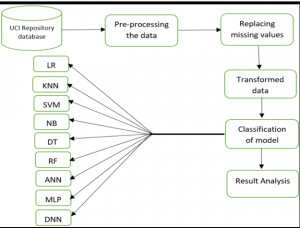
Figure 2: Machine learning technique for prediction of disease
(Source: Nguyenet al.2019)
Methods
The purpose of this project is to classify the disease based on input that is selected by the user and provide a precautionary measurement of the disease that can alert the animal’s owner if the predicted disease may cause sudden death. The awareness of the disease must be created for preventing the sudden death of the animals at any time in the future. Necessary measurement can help to rehabilitate animals from diseases as well as stop spreading the diseases to other animals or the people taking care of the animals with proper carefulness of respective diseases. Animal disease prediction system is mainly utilized for predicting multiple diseases. A multi-class classification algorithm is required for predicting different types of diseases.
Linear Regression
An SVM algorithm must be used to prepare the model where data is gathered from various sources. As per the view of Nguyen et al.(2019), this data contains so many symptoms depending on the animals such as cows, sheep, goats, and so on. Every dataset has so many instances as a separate model is established for each animal with proper training of the dataset. If the user selects the animal then the model regarding the animals will be loaded. Hence the applications will display the list of the symptoms and thus the user can observe the animals in the symptoms and finally submit the data. Thereafter the data that is in the frontend section is transferred to the trained model for prediction. That is the process where the model can predict the disease by providing precautionary measurements.
Algorithm of the linear regression
- Initialize the parameters.
- Predict the value of a dependent variable by given an independent variable.
- Calculate the error in prediction for all data points.
- Calculate partial derivative w.r.t a0 and a1.
- Calculate the cost for each number and add them.
If the disease seems to be dangerous the model can alert the user definitely.
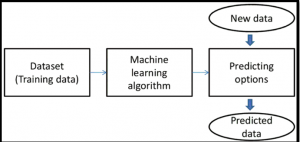
Figure 3: Animal disease prediction using a machine learning algorithm
(Source: Iqbal et al. 2021)
As per the view of Iqbal et al. (2021), there are various observations are recorded for each of the animals, and data has split into datasets that is containing such percentage of observations according to a sampling procedure. The datasets having a high number of observations are merged together and for the lowest value of observations, it is the same procedure should be followed. The training datasets are used for each model improvement stage that has descriptive analysis.
The formula for the regression analysis
Yi=f(xi,B)+ei
Yi=Dependent variable
F=function
Xi=Independent variable
B=unknown parameters
Ei=Errors terms.
The variables with the interest of predicting postpartum diseases are considered for inclusion. A large number of binary logistic regression models are developed for predicting the prevalence of diseases with the predictors of interest including postpartum diseases. Animals can be considered sick if they are diagnosed postpartum with such conditions and these are HYK, metritis, and mastitis. Invariable models can be used only for selecting pairs of correlated variables. As per the view of Pourhomayoun and Shakibi (2020), the variables must be removed from the multivariable models using a manual backward process and in this process, the lowest number of significant variables is sequentially removed. The same model must be applied to the test datasets after developing the final models for assessing the predictive ability. If the predictive ability of the resulting model is weak the results can be reported in the supplementary materials. The exact possibilities are decided for each sick animal after improvising a better understanding of the model’s ability between healthy and sick animals using the test dataset according to the prediction by the models.
MSE (Mean Absolute Error)
Machine learning techniques can provide a promising solution to reduce false and late predictions in order to understand the symptoms of a specific disease. As per the view of Kaleret al. (2020), the ML techniques consist of a variety of applications in support of human-level artificial intelligence. So many models for different types of applications can be built and trained using machine learning algorithms. The perfection of these algorithms for the datasets is critically observed with different train and test split ratios. The prediction of happening heart disease is growing rapidly day by day. Machine learning techniques evaluate heart disease and its risk factors with detailed classifications. A comparative analysis is developed based on the algorithms of machine learning. As per the view of Zhang et al. (2018), the performance of deep learning for animal disease prediction can be considered. The deep learning approaches have outperformed so many existing prediction methods including a prediction on transcript-wise screening and prediction on principal component analysis. But there are a few limitations of deep learning methods. Support vector machine has the most effective at predicting kidney diseases whereas logistic regression is best for predicting heart diseases. On the other hand, convolutional neural networks and random forest have valuable roles in order to predict common diseases of animals respectively. So the examination of performance matrices is useful for disease prediction via highly performed supervised ML algorithms including Linear Regression.
MSE=1/N Summation (i=1 ton) (yi-(mxi+b)
![]()
Figure 4: Mean square error value
(Source: Iqbal et al. 2021)
Artificial Intelligence approaches now have been implemented through different ways of analysis. Animal Health makes a great influence on the Ecological balance of the projects. There are different methods and algorithms that can be used in different scenarios. As per the view of Peters et al.(2020), in addition, there is also a different manner to look forward to Data in the most appropriate manner.
Different parts of the data analysis can be helpful in different scenarios. Animal Health research can help a lot in the discussion of the topic and Analysis. AH (Animal Health), researchers can help to solve different kinds of problems in the most appropriate manner. AH, Researches ideas and Techniques are also widely in a different range of Industries worldwide.
AH, Research benefits people from different sides. AH, Research can help to solve many kinds of problems worldwide. These methods can be implemented to solve many kinds of problems. A massive amount of Statistical Data is also used to solve different complex problems. There are different benefits of the system and it’s Analysis. AI methods are used to solve different kinds of problems. These methods can be used to solve every kind of problem. There are strong interactions between Animal Health (AH), Artificial intelligence (AI). These Data are closely related to Data Analysis domain. Machine Learning (ML) techniques can be helpful in different scenarios. I present some specific Data that can be helpful in different scenarios. Data Management and Engineering are also used in different scenarios. As per the view of Morotaet al.(2018), different AI methods are also hugely accurate manner. New Research techniques are also used in different scenarios and Analyses.
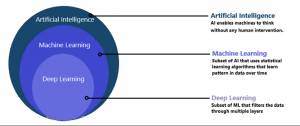
Figure 5: Machine learning algorithm
(Source: Kaleret al. 2020)
Different data and their applications can be in different scenarios. The multi-host-pathogen system can be used to solve different kinds of problems. Conducting research on Artificial Intelligence is the main factor in data analysis and Management. Data Collection, organization, and Analysis are helpful for different cases. Different Artificial Intelligence Methods are used and utilized in different case scenarios to overcome problems and solve different problems. Knowledge presentation is also a very necessary factor to solve many kinds of problems. As per the view of Liakoset al.(2018), different flexibility and Modularity are also a part of the whole process. Several types of models can be analyzed and Interpreted through Machine Learning Techniques. The field is actually a combination of many fields. These fields are generally a combination of fields like Software Engineering, Mechanistic modeling, Animal Health, Statistics, Data Science, and reasoning modeling. Animal Health data actually streams many kinds of Data including Medicine processing. There are some complex problems that can be solved through different Machine Learning techniques.
I have to answer different questions in the most intellectual methods. Animal Health can be used in different scenarios. Different Adaptive Data can be used and analyzed in different scenarios. As per the view of Nasseret al.(2019), different Data can be Analyzed and appropriated in different ways. Phenomenological niche Models are used in different systems. Different analysis of the Data can be helpful in different scenarios. Complex system Biology is also used to evaluate Data and solve many kinds of problems. Molecular Data can be helpful in different scenarios. There are different Data that can be used in the most appropriate manner. The underlying concepts ae used hugely in the most appropriate manner. Different AI methods and techniques are used hugely in different cases of the scenarios. Massive Data can be analyzed and perfected in appropriate manner. Supercomputing can help a lot in the Data mining and analysis. Different researchers have different approach in the specific are of Data Science and Machine Learning. Different methodological improvements can help a lot in the financial factor and Digital Infrastructure. Different European projects can be helpful to solve many kinds of problems in the Data Analysis sector. There are different vector machines, Clustering Algorithm and principal component analysis in the clustering Decisions methods.
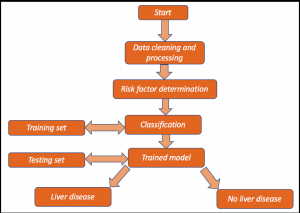
Figure 6: Machine learning technique of animal disease prediction
(Source: Wagneret al.2020)
This is actually a Combination of many things like Weather Landscape, Building Ambiance Detention Trade and using sensors. Different Data Alerts systems can be used to solve different kinds of problems in the most appropriate manner. Veterinarian methods are also used to solve different systems. Different Data sensors are also used to make the process better. Data Analysis and Experimentation can be done through different ways of calculation and Analysis. Learning methods can be used to solve different kinds of problems. Other AI methods can be used in different scenarios. There rae4 different levels of Complexity in the overall process.
However, the imbalance between different cases is also very important. A complex Biological system is also used in the most accurate manner. A wide range of data can be analyzed in different scenarios. Different bio-health Research Questions are also used to make a better outcome for everybody. At the population level, different analyses of the Data can be helpful for different scenarios. The use of Mechanistic systems is also used in different scenarios. Analysis can be done from different perspectives. Artificial Intelligence can be used in different cases to solve many kinds of problems. Contribution to different research fields can help in different cases. Current Human research methods are used in different cases. Data Analysis and Modeling also can help in different scenarios. Discrete ecological concepts are also used in different scenarios. Managing Livestock is also a very necessary factor to analyze Data in the most appropriate manner. Massive Data can be classified into different scenarios. As per the view of Wagneret al.(2020), minimizing data can be Analyzed in the most appropriate manner. On a large Scale, Data can be analyzed and focused through different ways.
Nevertheless, there are many different objects that can be helpful in different objects. Finally, there are different AI objects that can be helpful in different scenarios. Finally, there are different projects that can be helpful in different cases. Further Upstream of the Data can be used in different cases. Different cross-connection methods are also analyzed in the most appropriate manner. Machine Learning has a huge impacts on the determination and analysis of the topic. There are also some decision-making techniques that are used in different scenarios. Adaptive strategies and Decision making can help a lot in the overall indecision making Techniques. Current societal demand can be helpful to make the product the best. Ethics on the other side, and more generally the analysis of the data and collection of the Data in the moist appropriate manner. Managers also perform different managerial functions to bring and happen the required items. As per the view of Sharmaet al.(2020), need for Research is also a very necessary factor to solve many kind of problems. Different obstacles can be used in different cases. Predicting data can be accurate in different cases. Machine learning methods are used in different scenarios. Respect for a specific Ecosystem can be helpful in different cases.
Different potential Data can be used to solve many kinds of problems in the most appropriate manner. Different researchers have different approaches in specific fields. Pathogens are Analyzed the most appropriate manner. The use of mechanistic modeling is the most necessary factor to solve many kinds of problems. Different Input usage can be used in different scenarios. Relevant data can be analyzed and make accurate in the most appropriate manner. Life of wild animals are truly dependent on different scenarios. Using different pathological data can be harmful in different scenarios in Lab. but, using Data in the digital way can be harmful in different cases. Using phenomenological Approaches are the most accurate manner to solve many problems in the specific problems. Identifying data in bacterial Experimentation, can be available from different sources. Different production system has a huge implications and effect on the local groups and sanitary. As per the view of Craveroet al.(2021), different biomedical approaches have been used to solve many kinds of problems. Different Algorithms can be used to solve many kinds of problems.
Conclusion
Strong interaction and interrelation between different disciplines are very necessary to detect and solve Animal Health Related problems. Different data collection methods and analyses can be helpful in defense monitoring systems. Different AI methods can be used to solve many kinds of problems. A significant amount of Data can be analyzed in the most appropriate manner. Different AI tools can be used to solve many kinds of problems in the Artificial Intelligence and Animal Health issues. There are also some issues and barriers to the development of Research at AI (Artificial Intelligence)/AH (Animal Health) issue. Different Eco-health issues can be solved through different ways Algorithms and Analysis. Different information can be used to take out different Outputs in the most appropriate manner. Different technical issues can be solved through different ways. Complex Data can be analyzed using different Coding and algorithm. Strong connection and analysis can be solved different ways. Through this project, people have understood the applications of Machine learning in the animal Health areas.
Reference list
Cravero, A. and Sepúlveda, S., 2021. Use and adaptations of machine learning in big data—Applications in real cases in agriculture. Electronics, 10(5), p.552.
Iqbal, N., Jamil, F., Ahmad, S. and Kim, D., 2021. A novel blockchain-based integrity and reliable veterinary clinic information management system using predictive analytics for provisioning of quality health services. IEEE Access, 9, pp.8069-8098.
Kaler, J., Mitsch, J., Vázquez-Diosdado, J.A., Bollard, N., Dottorini, T. and Ellis, K.A., 2020. Automated detection of lameness in sheep using machine learning approaches: novel insights into behavioural differences among lame and non-lame sheep. Royal Society open science, 7(1), p.190824.
Liakos, K.G., Busato, P., Moshou, D., Pearson, S. and Bochtis, D., 2018. Machine learning in agriculture: A review. Sensors, 18(8), p.2674.
Mekonnen, Y., Namuduri, S., Burton, L., Sarwat, A. and Bhansali, S., 2019. Machine learning techniques in wireless sensor network based precision agriculture. Journal of the Electrochemical Society, 167(3), p.037522.
Moreb, M., Mohammed, T.A. and Bayat, O., 2020. A novel software engineering approach toward using machine learning for improving the efficiency of health systems. IEEE Access, 8, pp.23169-23178.
Morota, G., Ventura, R.V., Silva, F.F., Koyama, M. and Fernando, S.C., 2018. Big data analytics and precision animal agriculture symposium: Machine learning and data mining advance predictive big data analysis in precision animal agriculture. Journal of animal science, 96(4), pp.1540-1550.
Nasser, I.M. and Abu-Naser, S.S., 2019. Artificial neural network for predicting animals category.
Nguyen, M., Long, S.W., McDermott, P.F., Olsen, R.J., Olson, R., Stevens, R.L., Tyson, G.H., Zhao, S. and Davis, J.J., 2019. Using machine learning to predict antimicrobial MICs and associated genomic features for nontyphoidal Salmonella. Journal of Clinical Microbiology, 57(2), pp.e01260-18.
Pallathadka, H., Mustafa, M., Sanchez, D.T., Sajja, G.S., Gour, S. and Naved, M., 2021. Impact of machine learning on management, healthcare and agriculture. Materials Today: Proceedings.
Peters, D.P., McVe y, D.S., Elias, E.H., Pelzel‐McCluskey, A.M., Derner, J.D., Burruss, N.D., Schrader, T.S., Yao, J., Pauszek, S.J., Lombard, J. and Rodriguez, L.L., 2020. Big data–model integration and AI for vector‐borne disease prediction. Ecosphere, 11(6), p.e03157.
Pourhomayoun, M. and Shakibi, M., 2020. Predicting mortality risk in patients with COVID-19 using artificial intelligence to help medical decision-making. MedRxiv.
Sharma, A., Jain, A., Gupta, P. and Chowdary, V., 2020. Machine learning applications for precision agriculture: A comprehensive review. IEEE Access, 9, pp.4843-4873.
Wagner, N., Antoine, V., Mialon, M.M., Lardy, R., Silberberg, M., Koko, J. and Veissier, I., 2020. Machine learning to detect behavioural anomalies in dairy cows under subacute ruminal acidosis. Computers and Electronics in Agriculture, 170, p.105233.
Zhang, L., Zhang, H., Ai, H., Hu, H., Li, S., Zhao, J. and Liu, H., 2018. Applications of machine learning methods in drug toxicity prediction. Current topics in medicinal chemistry, 18(12), pp.987-997.
Know more about UniqueSubmission’s other writing services:

